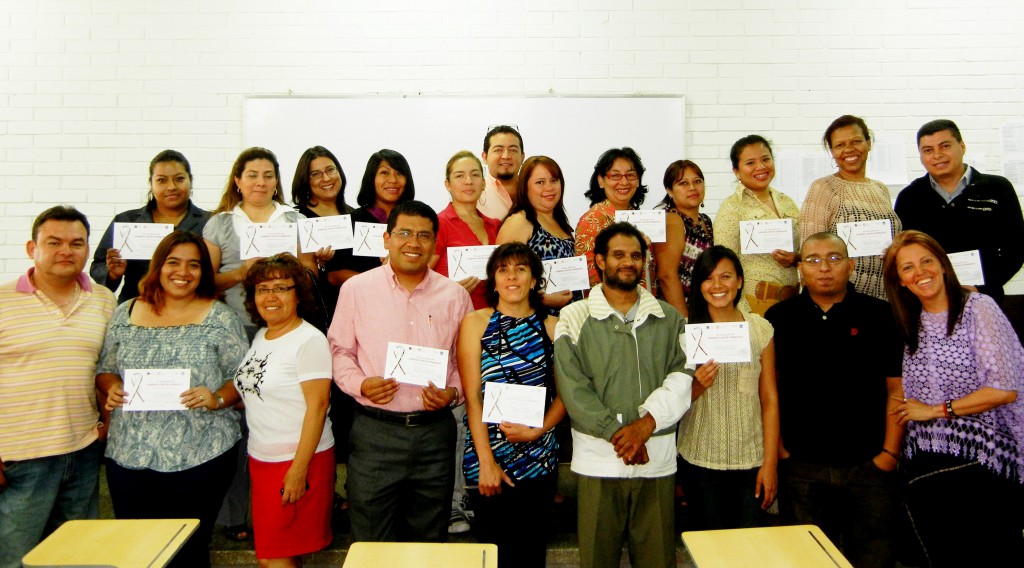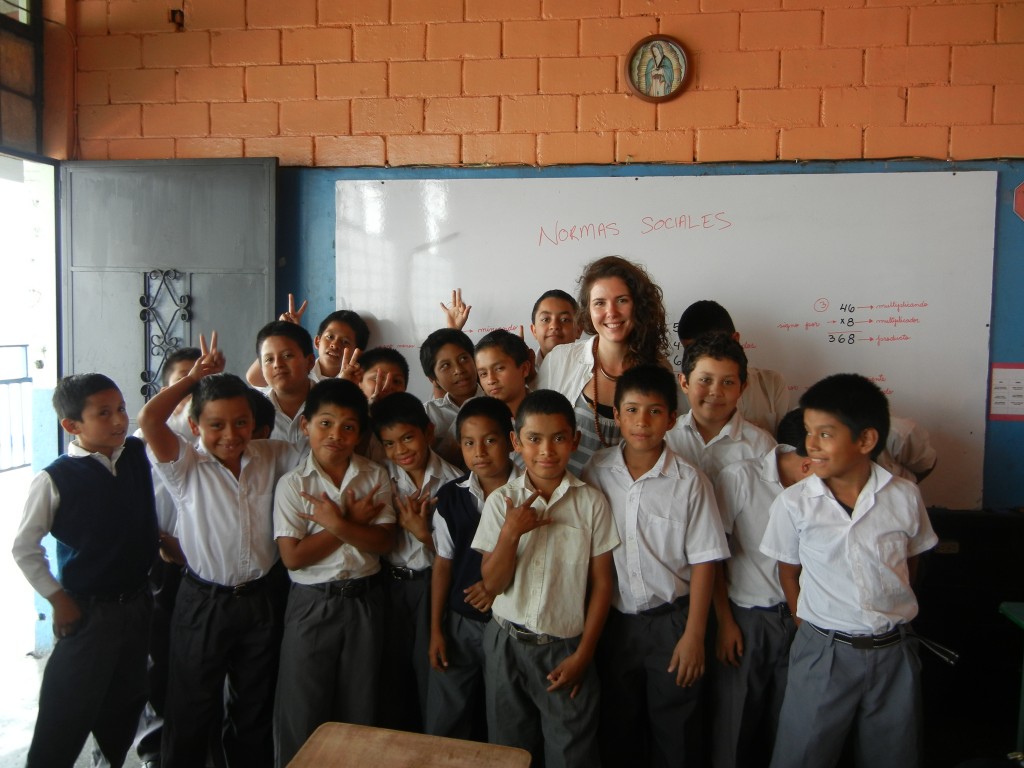In my second blog post from Guatemala City, I want to focus on the gender equality issues that we face here. Coming from Canada with a background in International Affairs and Women’s rights, it is easy to forget how unsettling the idea of gender equality can be when first addressed. Through MIA using the White Ribbon Campaign we are teaching gender equality in order to stop gender violence against women. Although this movement is relatively new in Canada, it is revolutionary in Guatemala. In my second week at MIA I learned how destabilizing and potentially dangerous even the beginning stages of equality can be.
In our final MIA class at USAC University this semester, a young women approached our Director Lucia Munoz and me. She had been attending our ten-week program with her male boss and male co-worker. She spoke to us in tears. Her boss was threatening to fire her because in the last class she had disagreed with him over a concept, and had risked voicing these differences. She had not been disrespectful or out of turn, but simply voicing disagreement seemed enough for him to threaten to fire her.
We of course offered any assistance we could, including meeting with her boss or his superior over this issue. Through tears she explained how she could not afford to lose her job, as she is a single mother and relies on this work to support her child and herself.
It was my wake-up moment. In our programs we try to create a safe place to teach about gender equality, social norms, patriarchy (machismo), social constructions of power, and other issues related to violence against women. However we are not teaching these ideas in isolation. These ideas have real world consequences and affect people’s lives, and concern for the welfare of participants must be a priority.
Power structures are difficult to change because those with power generally do not want to share it; and people without power often do not have the ability to demand equality. Violence comes in many forms, both physical and emotional, and attempts by those in power to maintain control is often a major factor in the violence. When the woman voiced her opinion, her boss threatened her in order to silence her.
Most people think that violence against women is a “women’s issue.” However since men commit the vast majority of that violence, both men and women have to be involved in creating change. Without the involvement of men, the underlying social factors that foster a climate of violence will continue to place women at risk. Until women in Guatemala and elsewhere can freely voice their opinions without repercussion, the pandemic of violence against women will continue.










 Proud Founder Member of the Guatemala Peace and Development Network
Proud Founder Member of the Guatemala Peace and Development Network